- A Hotly Debated Topic
- The History of Birds of Prey in Ireland and the UK
- What Birds of Prey are there in Ireland and the UK?
- Diet and Hunting Tactics
- Masters of their prey
- Birds of Prey as apex predators and their importance for ecosystem health
- Effects of removing Birds of Prey from the Food Chain
- Persecution
- Barbaric Persecution Practices
- Current Problems - Pigeon Racing
- Current Problems - Game Bird Keeping
- The Effort to protect Birds of Prey
- What to take away from this article
A contentious issue, there is no doubt about it and one that cultivates intense conversation, heated tempers, and blog posts being inundated with angry emojis over angry comments that gush righteousness and misinformation. So obviously the best thing to do is to look at this roasting hot topic from all angles and learn just why people feel so strongly about birds of prey (or bops) in these islands.
A Hotly Debated Topic
This is no easy conversation that can see opposing sides spouting facts and figures from ‘independent’ studies at one another, often aggressively. In one corner you have environmental organizations such as the RSPB, British Trust of Ornithology and BirdWatch Ireland as well as environmental scientists and conservationists. On the opposing side are those who race pigeons, gamekeepers and some farmers who see birds of prey as a threat to their own animals. Sensationalist newspapers draw from both to fan the flames and aid the spread of stigmas and outdated notions but hopefully here, in the next few passages, we can look at both arguments and the science, to end damaging ideas and think of how we can move forward together.
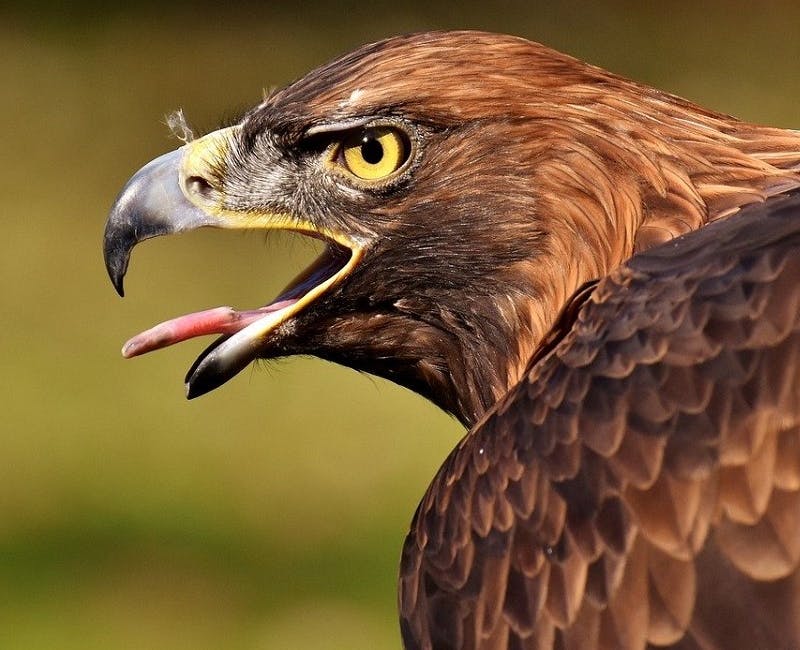
The History of Birds of Prey in Ireland and the UK
Firstly, let’s look at birds of prey, who are also known as raptors, the word coming from the latin raptare which means “to seize and carry off”, how tremendously fitting. Until the last few hundred years, the existence of birds of prey was far more prominent, not only in the natural world but also in folklore and mythology. The story of the mythological Irish seer Fintan mac Bóchra, who after a lifetime of 5,000 years, took his final form as The Hawk of Achill. In this story he has lived throughout all ages of the world, morphing into different animals and now tells its history. So, why are we talking about ancient mythical Irish men, perhaps this is marvelously unrelated but dare we search for meaning in myth? Maybe just for a moment. Can we acknowledge a reverence attributed to these birds and is it just a coincidence that a hawk was the final form of a seer, a wise old man, surely past generations were able to take how they saw the animals interact with their environment and wove it into their storytelling? On some level, status and respect were attributed to birds of prey by generations of the past, and maybe it’s time we rekindle it.

What Birds of Prey are there in Ireland and the UK?
Ireland is home to 11 species of raptor and the UK 15. Some of the most visible include the common buzzard, sparrow hawks, kestrels and peregrine falcons (the fastest moving animal on earth). Merlin’s and Goshawks too can occasionally be seen but can be difficult to identify to the untrained eye. Hen Harriers as well as Red Kites also share the skies with the occasional visit of Montagu’s harrier. Have I also mentioned EAGLES? ? Golden eagles, and White-Tailed Eagles, the latter being the 4th largest bird of prey in the world. Both once had a wide range across these islands, however, they are now only found in isolated locations and are exceedingly rare BUT they are here, and that fact in itself I think, is a little bit marvelous.
This is not the conclusive list, (we haven’t mentioned owls, but you better believe we will) though perhaps we can appreciate that there are far more big birds soaring above us than once thought.
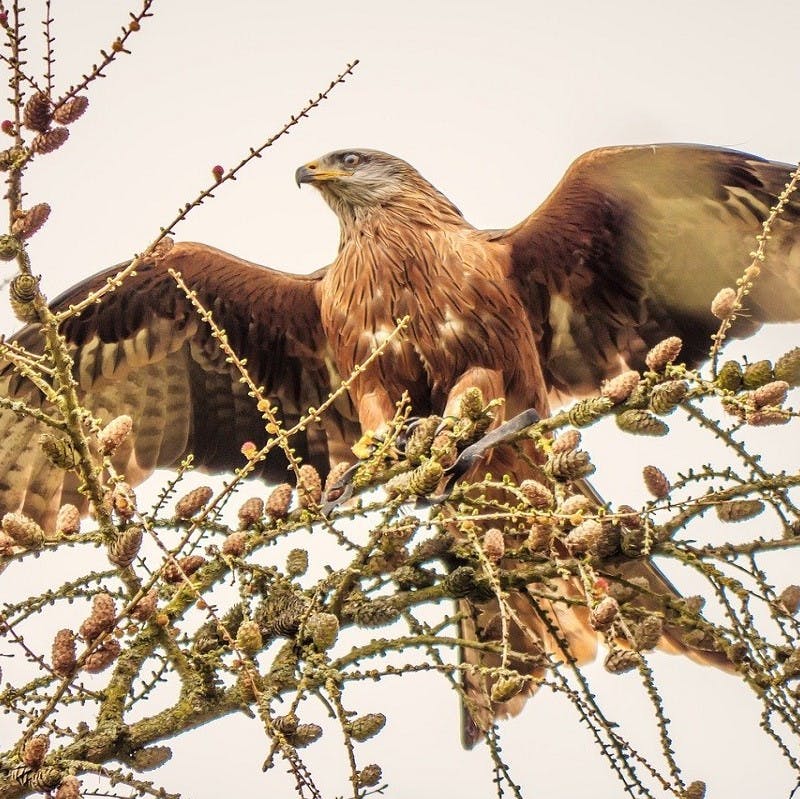

Diet and Hunting Tactics
Each species has its place in the ecosystem, its own prey and how they catch it can differ significantly between species. They all fill a niche in the environment and each one with a slightly unique approach. Some plummet in spectacular dives towards their prey, others hurdle and weave through dense forest and thickets, while others might awkwardly clunk down, landing on whatever they’re after, or simply wade through fields in search of bugs. Their tactics and diet can change depending on the birds themselves; where they live; what season it is; and what food sources are available; as well as coming down to individual preference. But even still, raptors have a varied diet to be proud of. So much so, peregrine falcons globally have been documented consuming over 2,000 prey items.
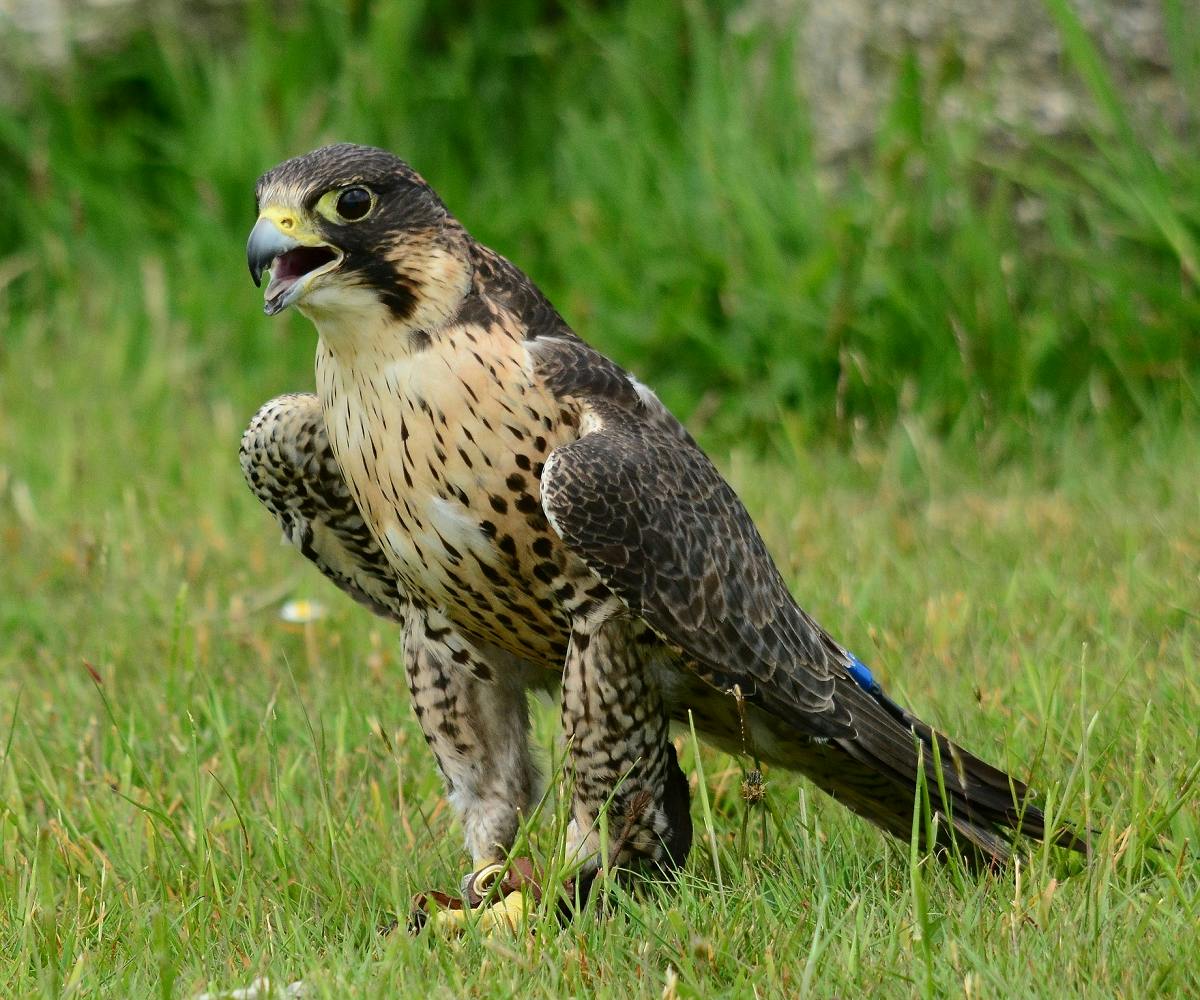

Take action now
Do you want to have a direct impact on climate change? Sir David Attenborough said the best thing we can do is to rewild the planet. So we run reforestation and rewilding programs across the globe to restore wild ecosystems and capture carbon.
Get involvedMasters of their prey
Buzzards
Even though they are a big bird, males between 550g-1kg mainly eat carrion, which is normally only for the worms, and speaking of worms, they make up a surprisingly large part of the buzzard’s diet, you can see them walking in field hunting them. Buzzards hunt worms… Amazing.
Peregrine falcons
Peregrine falcons on the other hand catch all their prey on the wing (except some they may steal from other raptors, devils!), deploying hunting tactics that can see them plummeting towards the earth at 200kms an hour to snatch an unsuspecting starling right out of the air. The females are larger (as is often the case with bops) and can therefore catch bigger prey however, both specialize in catching birds like waders, gulls and ducks.
Vultures
Vultures have a devilish penchant for eating carrion, they’re mad for it. This plays marvelously into the hands of the ecosystem, as we all know how terrible food wastage is, let alone the disease that rotting animals can create but instead it’s giving all the nutrients back into the food cycle.
Merlins
Named after a famous fantastical wizard, these birds are ferocious creatures who have been observed attacking trains despite their small size. However, when train hunts are unsuccessful (one figure suggests 98% of the time) their diet can range from sandpipers, bats and insects but it depends on their location. One study in Ireland showed the Merlin’s diet comprised of 24 bird species which accounted for 65.9% of its total diet. The rest of its protein came from moths at 33.1% and dragonflies at 1%.
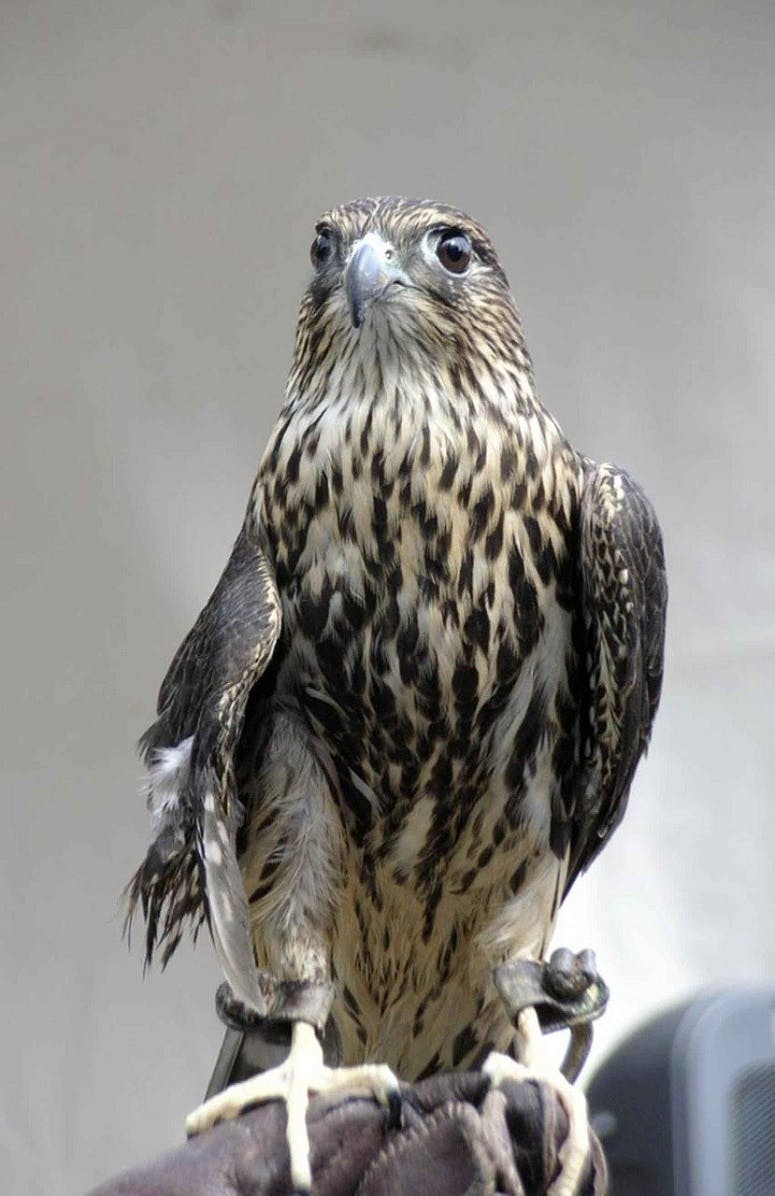
Birds of Prey as apex predators and their importance for ecosystem health
Birds of prey are found literally on every continent, in every ecosystem, except Antarctica. That’s right, peregrine falcons along with several other species are found in arctic regions, and for good reason. Raptors are indicator species who can tell us how healthy the ecosystem is. It may seem counter-intuitive but the more of these carnivorous beauties there are, the more other species there are as well. Raptors simply can’t survive unless there is a large diversity of prey to choose from. They are also apex predators and essential components of the food web.
Let’s take owls, the noblest of all carnivores. Owls are a perfect example of an apex predator as the only animal that will actively hunt an owl, is another owl. All creatures below these regal birds are prey and therefore consumable. Like all birds of prey, they will eat what they can wrap their talons around including hares, weasels, bats and mice, and most owl species specialize in critters that stir when the sun goes down. Owls (and all raptors) play the role of all apex predators at the top of the food chain, they maintain the natural balance of the food web, keeping the populations of herbivores and lesser carnivores in check and if you were to remove them from the environment, an imbalance in is created.
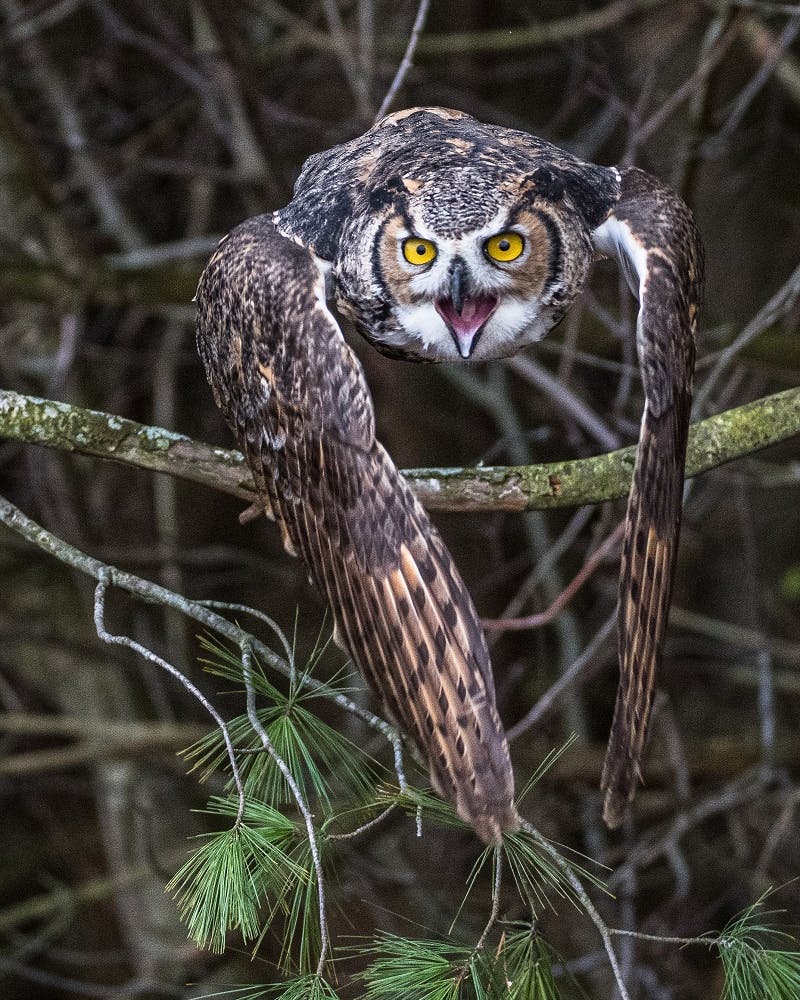
Of all types of birds, birds of prey have always fascinated people.
Jim Knight
Effects of removing Birds of Prey from the Food Chain
In Ireland and the UK, we can observe this all around us and it is referred to as meso-predator release which is essentially when you remove the top dog (or bird in this case) from the food chain, it affects not only their direct prey but a range of other species. As we have learned before, it’s all connected. What we can see in Ireland and the UK is an ecological anomaly of sorts, where we have a sheer overabundance of members of the corvid family. Hooded crows, magpies, rooks and jackdaws all commonly referred to as crows. In addition to all our “crows”, we also have a huge amount of foxes that can devastate ground-nesting bird colonies. Due to the absence of our birds of prey, as well as how wily crows and foxes are for learning how to cohabitate with us humans, they have both seen exponential growth without seeing any predators.
Oh, you didn’t know that birds of prey ate foxes? Well, they absolutely do, and badgers. Eagles and owls are the top predators of foxes (predominantly their young, called kits) and it’s just another example of how important these birds are for the ecosystem, keeping that mystical balance of nature in check.
Now, the hard stuff, the division of mindsets, the real contention in the issue of birds of prey, why they are killed illegally.
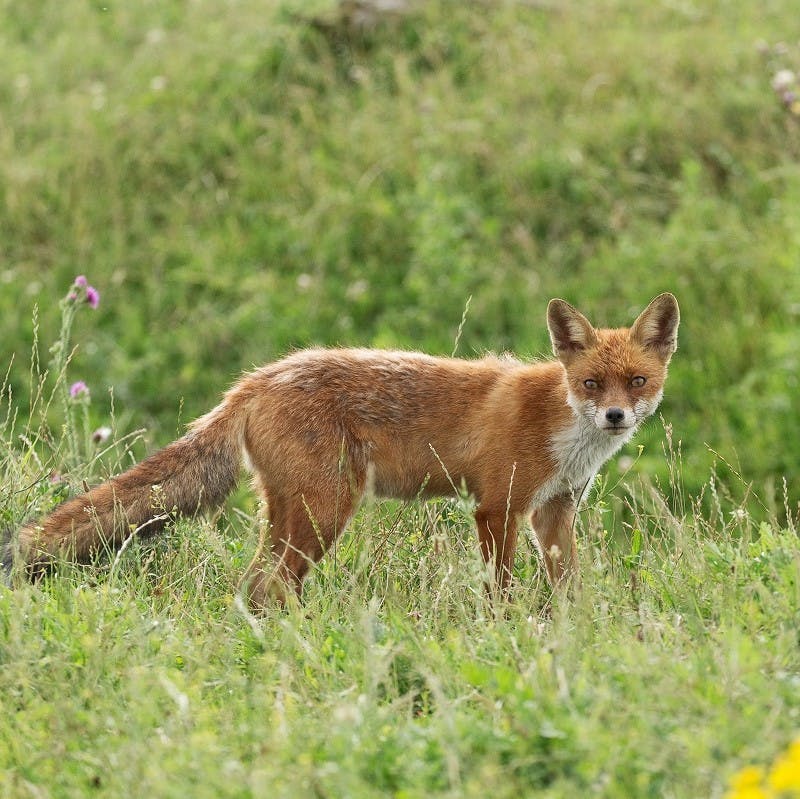
Persecution
Ugh, the persecution. It’s bleak as heck. But we must.
Despite the cold hard figures that say, “you know, raptors really aren’t the problem here,” birds of prey find themselves in the same place they’ve been for hundreds of years, the victims of Draconian predator control. It all started in the 18th and 19th centuries when numbers of bops began to seriously decline and their rarity today is directly because they were seen as vermin and people were encouraged to shoot, trap, poison and exterminate them. Not to mention a highly lucrative taxidermy trade which sought these massive birds simply to show off in the grand manors display case. So lame, I know.
The idea circulated, that birds of prey would kill your livestock and carry off your gamebirds, take your job and then sleep with your wife. Obviously, all of this was bad press and it led to all-out persecution and eventually the extinction of several species of raptors on our island including the buzzard, golden eagle, white-tailed eagle and the red kite. Although this claim is somewhat true of poultry (one guess how the Hen harrier landed its name), when it comes to golden eagles carrying off farmers' lambs, it has been largely disputed and effectively disproven. When golden eagles do take lambs, they are generally scavenged.
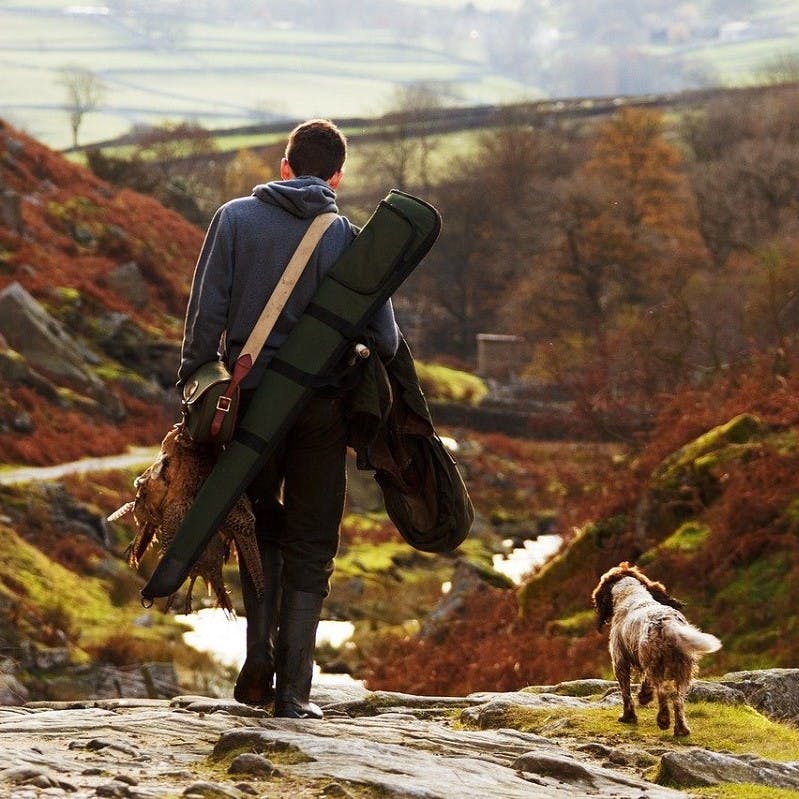
Barbaric Persecution Practices
So just how do they do it, man’s cruel ingenuity couldn’t possibly surprise us could it? Well, it just might, in a gross example of humans thinking they’re smart, sees the exploitation of a bird of prey’s natural behavior. In one practice, a metal claw-like trap is set on a wooden post. Birds of prey often use these posts to get a lay of the land and also to feed on their juicy bounty. When a bird lands on it, it springs closed, trapping the bird with the metal claws and here it could stay, slowly dying for days, which is often the case. You know what’s really messed up, this practice has been illegal, that’s right illegal, since 1904. People in 1904 thought it was too barbaric but it’s not uncommon these days to hear of these traps being set. Another, equally twisted form of “predator control” is where a live pigeon is covered in poison, tied to a string and left out as bait for birds of prey which will then be poisoned.
These practices come in conjunction with decades of poisoning from organochlorides (eventually banned in 1982) that were once used widely as pesticides as well as people who go out shooting them at random. 200 buzzards poisoned here, an eagle shot there, there is a continuous outpouring of figures showing birds of prey being killed. It only takes a small minority of people to wreak ecological havoc, however, there is so little accountability or prosecution, and far more often than not. Nothing. Is. Done.
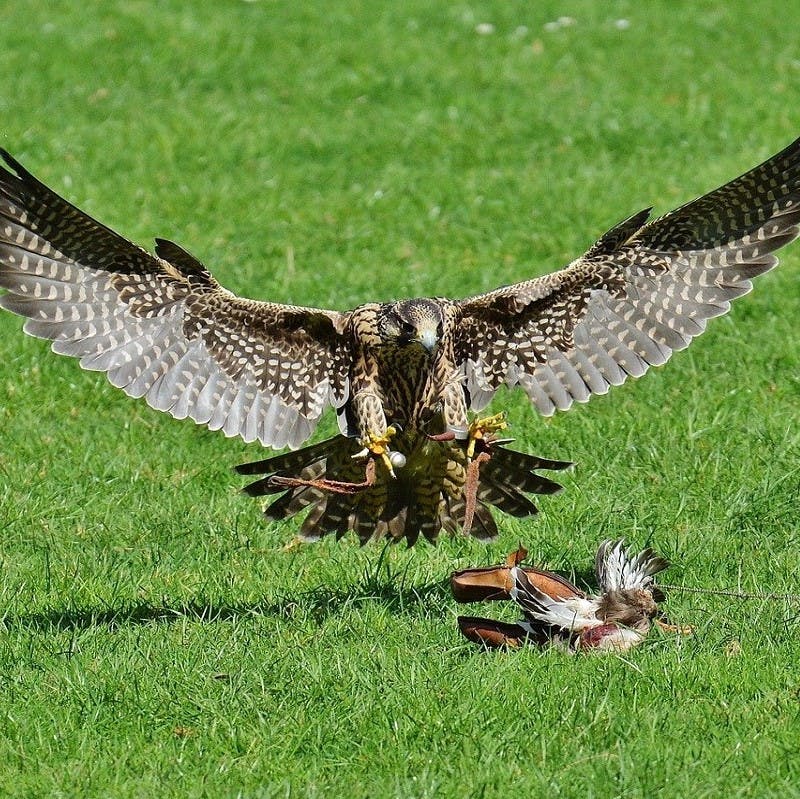
Current Problems - Pigeon Racing
The problems facing birds of prey today come from two main camps, pigeon racers or fanciers, as they are known, and the keepers of game birds such as partridges, quail and pheasants. Magnifying glasses out detectives, let’s look at why.
This has long been a much-loved hobby becoming increasingly popular in the early 19th century and works like this, prized pigeons are bred and sold and then kept by their owner in a loft. They are exercised regularly so they can grow to be in peak (or beak) physical condition (ha!). The exercise and practice flights around the pigeon’s loft are also so they can become familiar with the sights and surroundings of their loft. Racing pigeons have a highly unique homing sense and no matter where they are released from, they will try their hardest to fly back to their coup. Each year the racing season rolls around with pigeon fanciers from far and wide, bringing their beloved doves to a location and release them off into the clear morning air and whomever owns the bird who makes it back to its loft first, is the victor. How wholesome.
Now there are marks going for anyone who guesses what the issue might be with apex predators and flocks of semi-lost pigeons. Yes, they get eaten, or so the claims of distressed pigeon racers… well, claim. Resolution of the issue is made even more difficult when studies funded by respective sides produce contrasting results stated as facts. What makes matters worse is when in times of slow news, instead of taking an unbiased approach and telling it down the middle, newspapers and online media create headlines that attempt to instill fear and upset in those unfamiliar with the topic. Of course, you wouldn’t want the reintroduction of these birds, if the only time you hear of their existence is when you are told they rip apart their prey while it’s still alive and associated with titles like demon-monster beasts.

Current Problems - Game Bird Keeping
In Ireland and the UK as well to a much lesser extent across Europe, the keeping of game fowl is one big plump business with many game bird keepers who invest a huge amount of time, money and land in the rearing of wildfowl. Many of these birds that are reared are then released either into the wild or onto large estates for hunters to come and shoot them for sport. The UK sees up to 57 million non-native gamebirds released every year for this recreational sport. These releases occur annually on a small, medium, or large scale which can see anywhere from under 3,000 birds to over 10,000 birds being liberated into a wilderness they were actually never meant to live in. Hunters with either friends or as part of groups will join in on these releases to hunt the released birds with people also paying money to stay at lodges or on estates to hunt the birds. It’s people’s livelihoods and can bring in a lot of much-needed money to isolated rural economies.
Although this sport brings with it quite a few negatives for native animals and the environment, the problem it poses for raptors is that they are blamed for the reduction of gamebird populations. It’s astronomical the number of birds that aren’t actually killed and instead make off into the woods, beating their little underdeveloped wings. A study made in the European Journal of Wildlife states that as many as 60% of gamebirds released, do not end up being killed. On top of this as much as 70% of the gamebirds lost to predation, actually comes from foxes. On top of this, the RSPB says that one-third of gamebirds released become fox food. So many are actually just lost to the environment. A big issue with gamebird keeping is that since it began, gamekeepers have been pretty much been left to their own devices, with little to zero regulation or monitoring so getting accurate data is difficult. Ill-practices not only do serious environmental damage but, negatively affect birds of prey.
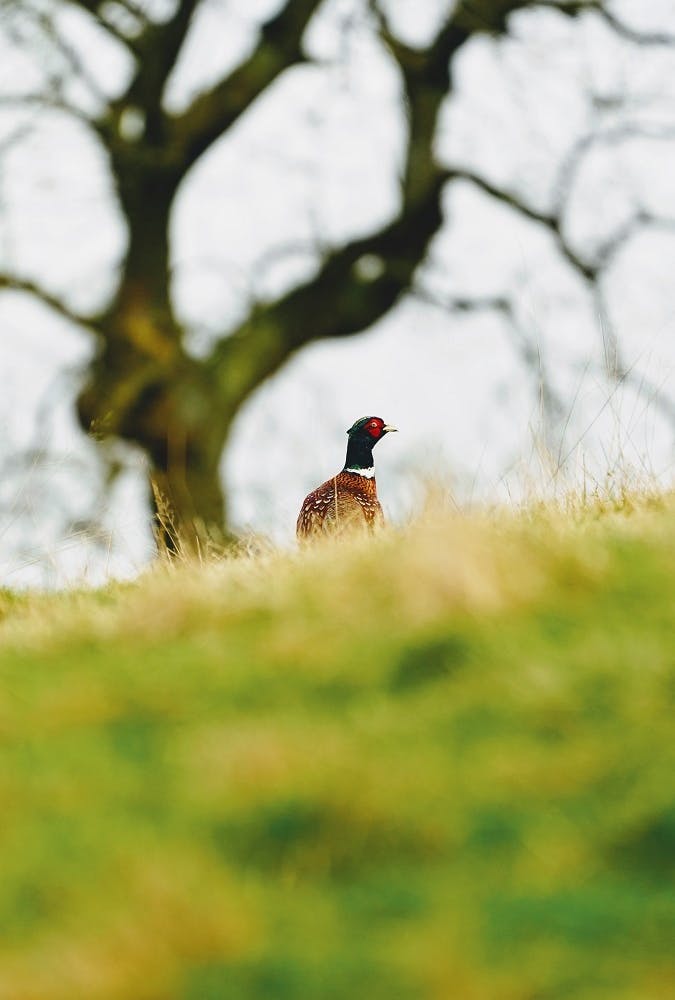
The Effort to protect Birds of Prey
So where is the hope? Are the raptors just destined once more to dwindle to extinction?
Well, for the most part, raptor numbers are on the increase on our islands but incidents of illegal killing are constantly hampering it. It takes raptors much longer to produce offspring, particularly when they are in reintroduction programs. Nature would be foolish if eagles had the same clutch sizes as their prey right, and nature’s not foolish, is it? Well, maybe when it comes to the Giant Panda but that’s a whole different story.
One utterly enormous positive we can take from all this cluster-cuss is that a portion of the farming community has come from protesting at the airport when white-tailed chicks arrived from Norway, to now, working closely with raptor conservation groups to ensure their recovery. Many farmers are seeing that these birds aren’t really the threat once imagined and are now even helping to protect birds of prey and are invaluable when it comes to reporting sightings of raptors. This is particularly true in one of Ireland’s most northern counties Donegal.
When raptors started to reclaim what was once their territory, we see a change. The number of rodents go way down. In Donegal when golden eagles were released, there was a MORE successful lambing season. You know why, I’ll tell you why, because of all the foxes that would have carried away lambs, got themselves carried off to the nests of golden eagles instead.
Gamekeepers in Langhome in Scotland are using diversionary feeding for the hen harriers who actually, stole a lot of birds, there I said it, they ate loads of grouse. But when diversionary feeding methods were implemented, which is essentially leaving food out for the harriers, so they won’t steal grouse, 86% fewer gamebirds were raptare’d. Get it? Sure you do.
Farmers in Israel are actively encouraging owls and kestrels to their farms by putting up nest boxes, over 3,000 of them! With more of these apex predators around the number of pesky rodents goes way down which also means less highly toxic chemicals. Farmers’ applications to procure the chemical Rosh-80 (used for rodent control), in the last four years dropped between 40% and 90%, so way less chemical use when these birds are just out there, doing their thing. More efforts include Mossy earth's building-eagle-nest-platforms project to encourage breeding among the Scottish population of golden eagles and support the return of white-tailed eagles.
There are so many positives to draw from that I don’t know where to start, from the farmers having to spend less on harsh chemicals, from the ground not being polluted with such harsh chemicals, to the birds who are getting free accommodation and warm (blooded) meals served up daily. EVERYONE’S WINNING! Love it, we just need more of that here.
What to take away from this article
So, what can we take away from this carnivorous learning quest we’ve embarked on together? Birds of prey are dope? Yes, correct, but what else?
Studies found with racing pigeons, actually only a very small percentage can be linked-to birds of prey besides some rare and unfortunate instances. The rarities and misinformation should not however form the motivation of such damaging, reckless and thuggish actions which are all too common.
There is one study, where both sides met to parlay and then fund the work of the Raptor Working Group. 18 groups in total, some environmental groups, others included a long-distance pigeon racing union and gamekeepers unions. The study was the first cross effort by both sides to reach an understanding and it was agreed that their efforts would combine and to be mindful of the interests of both sides and to continue monitoring the best practices to ensure all animals are protected.
Communication between groups is crucial because there are solutions, really viable solutions and they are happening, we just need to see it on a larger scale with more public involvement and education with governmental backing.
What I think is most important, is that we need to establish a well-rounded and informed opinion. We must also be aware of an animal’s place in the ecosystem, all the good they do, and even learn to appreciate the uniqueness of their lives, before we take to social media and begin making outlandish claims and demonizing them. Perpetuating the spreading of misinformation is only more damaging to the species (and also to your soul) who already live on the brink. It is imperative that we actively support their reintroduction and survival. With more of this, we can shift our focus to how to enable the birds to truly settle once again in their natural environment and bring about proper, beneficial land management practices where our native wildlife can thrive.
I truly wish we could have just talked about all the neat characteristics of these birds but unfortunately, these conversations have to happen. Birds of prey offer us so much and we should offer them our support and continued protection because they need and deserve it. With over 500 different species (out of around 10,000 bird species in total) ranging from hawks, eagles, owls, vultures and falcons, they are keystone species that every healthy ecosystem needs. I think it’s time again we rekindle mythological sentiments of old and change our view of these exceptional birds.

Sources & further reading

- “Conservation of Raptors” - Stanford University
- “State scheme teams up farmers with endangered birds of prey” - www.thejournal.ie
